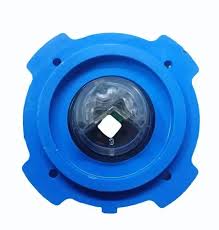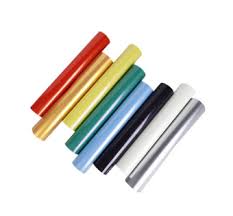MARKET OVERVIEW:
Global Urea Quality Sensor market is estimated to reach $2658.4 Million by 2031; growing at a CAGR of 5.8% from 2024 to 2031.
The Urea Quality Sensor market is a crucial aspect of global industries focused on emissions reduction and environmental sustainability. It is particularly popular in sectors like automotive and heavy machinery, where sensors measure the concentration of urea in diesel exhaust fluid to ensure optimal system efficiency. These sensors are also widely installed in commercial vehicles, such as buses and trucks, to meet emissions standards set by regulatory bodies.
The market is expected to grow beyond the automotive sector, as construction, agriculture, and marine industries also adopt urea quality sensors. Technological advancements in sensor fields are driving the market, with manufacturers continuously improving accuracy, durability, and reliability. Vehicle electrification and hybrid technologies are also opening up new markets for these sensors.
The geographic distribution of the market will also change, with Asia-Pacific and Latin America likely to face greater demand due to increased regulatory standards. Industrialization and urbanization will also expand markets, as industries seek solutions to their environmental impact. The market will continue to grow due to advancements in sensor technology and global emissions regulations.

GROWTH FACTORS
The Global Urea Quality Sensor market is poised for significant growth, driven by factors such as fuel efficiency and stringent environmental regulations aimed at reducing harmful emissions. Urea quality sensors play a crucial role in ensuring that the urea solution in selective catalytic reduction systems meets required standards, thereby lowering nitrogen oxide emissions from diesel engines.
Key Growth Drivers
- Rise of Electric and Hybrid Vehicles: While electric vehicles do not directly utilize urea sensors, hybrid vehicles rely on them for environmental compliance, increasing demand as hybrid usage grows.
Challenges
- High Costs: The relatively high price of urea sensors may deter manufacturers from adopting these technologies.
- Complex Integration: The intricate systems designed for these sensors can lead to technical issues, necessitating ongoing maintenance and updates, which may hinder small-scale producers.
Future Opportunities
Despite challenges, advancements in sensor technology promise increased efficiency, cost-effectiveness, and easier integration into vehicles. Growing environmental awareness and the push for cleaner technologies will further enhance demand for urea quality sensors. Stricter regulations and a focus on sustainability are expected to create new growth avenues in the coming years.

MARKET SEGMENTATION
By Type
The Global Urea Quality Sensor market is poised for significant growth due to advancements in sensor technology and increasing focus on emissions across various industries. These sensors are crucial for measuring the quality of urea in diesel engines, which helps break down harmful nitrogen oxides. Stricter emission standards imposed by governments worldwide are likely to drive demand for these sensors.
Market Classification
- Types of Sensors:
- Single-Tube Sensors: Simple, used in smaller systems for basic monitoring.
- Multiple Tubes Sensors: Offer detailed readings, ideal for larger, complex systems requiring precise monitoring.
As emission control becomes increasingly important, both sensor types are expected to evolve, with manufacturers investing in research for enhanced accuracy. This trend is particularly evident in the transportation and agricultural sectors, which are tightening emission controls.
The market for urea quality sensors will continue to grow, especially in traditional internal combustion engines, despite the rise of electric and hybrid vehicles. Heavy-duty diesel engines in trucks, buses, and construction equipment will maintain substantial demand. Overall, the market is set for steady growth as technology advances, ensuring effective monitoring and control of urea quality across various applications.
By Application
The global market for urea quality sensors is projected to experience significant growth due to increasing environmental concerns and stricter emission regulations. These sensors are essential for monitoring urea levels in Selective Catalytic Reduction (SCR) systems in diesel engines, ensuring optimal performance and minimizing harmful emissions. As governments impose tighter emission norms, the demand for urea quality sensors in passenger vehicles is expected to rise, driven by consumer awareness of environmental issues.
Commercial vehicles, including trucks and buses, are also major users of diesel engines and SCR technology, leading to a heightened reliance on urea quality sensors. This demand is fueled not only by regulatory compliance but also by the need for operational efficiency and reduced maintenance costs. Accurate sensors help prevent engine damage from poor-quality urea, thus extending vehicle longevity and contributing to emission reductions.
Beyond the automotive sector, industries like power production and heavy equipment are exploring the potential of urea quality sensors as emissions monitoring becomes more stringent. The trend toward improved sensor technology and ongoing development of emission standards will sustain the relevance of urea quality sensors, ensuring their integral role in promoting cleaner transportation and industrial practices.
By Sales Channel
The Global Urea Quality Sensor market is poised for significant growth due to increasing environmental regulations and the need for efficient vehicle emissions control. As countries and companies strive to reduce harmful emissions, advanced urea quality sensors will play a crucial role in meeting stringent exhaust emission standards, particularly in vehicles utilizing Selective Catalytic Reduction (SCR) systems.
The market is primarily segmented into two sales channels: OEMs (Original Equipment Manufacturers) and the Aftermarket. OEMs are a stable demand source as vehicle manufacturers incorporate these sensors in new models to comply with strict emissions requirements. Long-term contracts between manufacturers and OEMs will ensure consistent demand.
Conversely, the Aftermarket is crucial for ongoing sales, as vehicles equipped with urea sensors will require replacements or upgrades. The growing global vehicle fleet, especially in developing regions, will boost Aftermarket distribution, as older vehicles are updated to meet new standards.
Advancements in sensor technology regarding accuracy, durability, and efficiency will shape the market's future. Despite shifts in emission control technology with the rise of electric and hybrid vehicles, the demand for urea quality sensors remains essential for traditional combustion engine cars. Overall, environmental concerns will sustain the market's growth.
REGIONAL ANALYSIS
The Global Urea Quality Sensor market is experiencing significant growth across various regions, each contributing uniquely.
- North America: The U.S., Canada, and Mexico are key players, with the U.S. leading due to its strong automotive and agriculture sectors, driven by stringent pollution regulations.
- Europe: The market is steadily rising, particularly in the UK, Germany, France, and Italy. Germany is a major market due to its robust automotive industry and commitment to pollution reduction, while other countries emphasize environmental sustainability, boosting sensor demand.
- Asia-Pacific: This region shows great potential, with India, China, Japan, and South Korea investing heavily in urea quality sensors. China’s vast manufacturing sector and India’s agricultural focus are significant growth drivers, while Japan and South Korea are expected to advance sensor usage.
- South America: Brazil and Argentina are increasingly interested in urea quality sensors, particularly in agriculture.
- Middle East & Africa: The market is growing in GCC countries like Saudi Arabia and the UAE, with a focus on sustainability and innovation, especially in Egypt and South Africa.
Overall, these regions present unique opportunities for the global urea quality sensor market's future growth.

KEY INDUSTRY PLAYERS
The Global Urea Quality Sensor market is rapidly expanding, particularly within the automotive sector, driven by stringent environmental regulations aiming to reduce harmful emissions. Urea quality sensors are essential for vehicles utilizing the SCR system to ensure compliance with emission standards by measuring the concentration of urea in diesel exhaust fluid (DEF), thereby playing a pivotal role in NOx emissions reduction.
The competitive landscape is dominated by leading companies such as Vitesco Technologies GmbH and SSI Technologies, LLC, who are advancing sensor technology through ongoing research and development. Other significant players, like TE Connectivity and KYOCERA AVX Components, provide innovative solutions tailored for various industries, including automobile manufacturing. As environmental concerns intensify, stricter emission regulations are anticipated, presenting opportunities for companies like SUN-A Co., Ltd. and Anhui ActBlue Environmental Protection Co., Ltd. to capture greater market share. Emerging entities, such as KUS Technology Corporation and Kailong High Technology Co., Ltd., are yet to revolutionize sensor technology but hold potential in meeting global demand.
The market is expected to witness increased cooperation among key stakeholders, including partnerships and mergers, as companies combine resources to promote environmental sustainability. Looking forward, the market seems poised for growth, driven by rising demand for cleaner technologies and fostering innovation to stay adaptive to global needs.
REPORT SCOPE AND SEGMENTATION
|
Attributes |
Details |
|
Market Size By 2031 |
USD 2658.4 Million |
|
Growth Rate |
CAGR of 5.8% |
|
Forecast period |
2024 - 2031 |
|
Report Pages |
250+ |
|
By Type |
|
|
By Application |
|
|
By Sales Channel |
|
|
By Region |
|
|
Key Market Players |
|



_page-000149.jpg)
_page-000148.jpg)
_page-000147.jpg)
_page-000146.jpg)






 APAC:+91 7666513636
APAC:+91 7666513636





